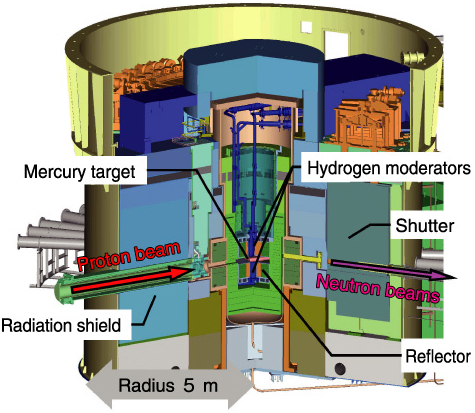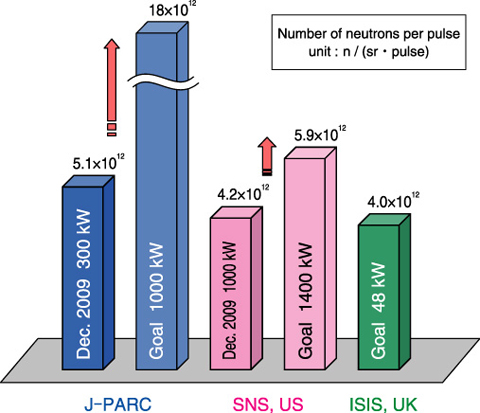
Fig.14-12 1 MW pulsed neutron source at J-PARC

Fig.14-13 Comparison of neutron intensities of the world’s major spallation neutron sources
Neutrons can be used as probes to observe the structure and motion of materials. World-leading scientific outcomes in the fields of materials and life science, and further contributions to industrial applications such as the creation of innovative materials and medicines, are anticipated from the use of intense pulsed neutron beams. To realize the world’s most intense pulsed neutron beams we have constructed a neutron source (Fig.14-12) in the Materials and Life Science Experimental Facility in J-PARC. The first neutron pulse was generated in May 2008, user service operations commenced in December 2008 at 20 kW beam power, and operations have been continuing at elevated 120 kW beam power since November 2009.
A high power test operation to generate intense pulsed neutrons was conducted by increasing the beam power to 300 kW on December 10, 2009. The number of neutrons emitted from the hydrogen moderator per unit solid angle per pulse was found to be 5.1×1012. As of December 2009, the corresponding neutron intensities in the world’s major spallation neutron sources were 4.2×1012 neutrons at the SNS facility in Oak Ridge National Laboratory, US, and 4.0×1012 neutrons at the ISIS facility in Rutherford Appleton Laboratory, UK (Fig.14-13). Thus it was confirmed that the neutron intensity achieved at J-PARC was the world’s highest. J-PARC’s neutron intensity will eventually be three times that of SNS when the beam power is raised to the rated 1 MW.
The outstanding performance of the J-PARC neutron source is a result of the accelerator group’s continuous efforts to increase the beam power. The number of pulses per second is suppressed to 25, compared to 60 at SNS, to increase the number of neutrons in each pulse. The Monte Carlo calculation code PHITS for tracking the behavior of protons and neutrons in matter has been developed to optimize the materials, dimensions, and configurations of the neutron source components such as the mercury target, hydrogen moderator, reflector, etc. Some unique ideas have been introduced in the design of the neutron source, such as the invention of a moderator shape to push up the neutron intensity and development of a new Ag-In-Cd alloy neutron absorbing material.
Several challenges still remain before we achieve the rated 1 MW power. We will continue our efforts to solve these issues in order to claim the highest-performance pulsed neutron source in the world.